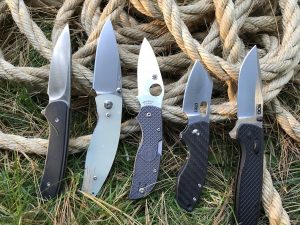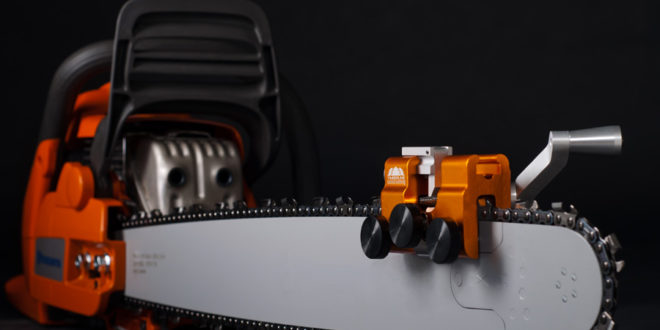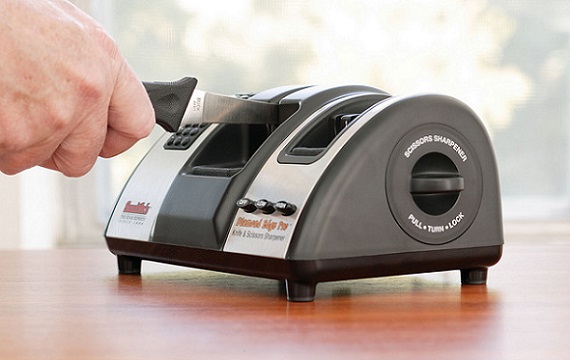Knives are very personal choices. If you were to ask 10 people what’s the best everyday carry (EDC) knife, you will likely get 10 different answers. In short, shopping for an EDC folding knife boils down to a matter of personal preference.
However, that doesn’t mean that you would just grab the first EDC folding knife you see on the shelf. Or order for the first model you view on an online store, right?

In selecting an EDC folding knife, you’d still want to consider the following factors:
Local knife rules
EDC folding knives are preferred by many because of their distinct advantages. For one, these are versatile knives that can fit inside a pocket. Moreover, these are generally permitted in most states in the US.
But the length of the blade will also have to be considered for the knife to be considered legal. Usually, EDC folding knives that are less than 2.5 inches in length are permissible. Knives that are shorter than 3 inches are allowable in Delaware while in Colorado, you may be able to carry an EDC folding knife with a blade of up to 3.5 inches.
In Missouri, Florida, and Connecticut, EDC folding knives that are up to 4 inches long are considered legal. Local knife rules are more lenient in the states of North Dakota, Georgia, and Texas where it is legal to carry blades up to 5 inches in length.
In short, you should familiarize yourself with local laws on knife carry and possession before buying an EDC folding knife.
Blade shape:
Function dictates the shape of the blade. This means that the shape of the blade is not for aesthetic purposes but designed for a particular use. There are numerous knife blade shapes so it might serve you to get familiar with them.
One of the more popular blade shapes is the drop point blade. Durable and versatile, it is ideal for stabbing strikes. It is not hard to identify this blade shape with its familiar convex curve starting from the spine all the way to the tip.
Clip point blades look like drop point blades. But the solitary distinction is the concave curve to the tip instead of a convex curve. Like the drop point blade, it is ideal for quick stabbing with minimal drag and faster withdrawal.
There are also tanto blade shapes that are extremely strong. It has a flat grind with a high point. It looks like a chisel point. The lack of a belly makes it not the best for slicing but you can rely on a tanto blade in stabbing things.
Then there are the spear point blades which are ideal for stabbing with their symmetrical and balanced shaped. This type of blade is also effective in slicing and for general tasks.
Knife scales:
Knife scales pertain to the materials used for the handle of the EDC folding knife. It can affect the grip of the knife as well as the comfort (or lack of it) in handling.
Like blade shapes, there are numerous knife scales to choose from. Those made from aluminum are known for being hard yet lightweight. However, it can conduct both cold and heat. Knife scales made of titanium are capable of resisting rust. Stronger than aluminum, titanium knife handles are robust and lightweight.
Another popular material used in the handles of EDC folding knives is Micarta. It is strong and lightweight, too. Moreover, it has a slick surface that requires the creation of texture for a good grip.
Smoothness of opening:
You may have a knife with the sharpest blade in the world but in an encounter in the wild, the inability to open a knife would prove to be fatal. That’s why you would want to have an EDC folding knife that is easy and smooth to open.
There are different opening systems to choose from such as thumb hole, thumb stud, assisted opening, and wave opening. Look for a folding knife that you can open easily even with one hand.
Locking mechanism:
The locking mechanism is important to your safety especially if you are to operate the knife one-handed. Look for an EDC carry knife with a lock on the handle as it would prevent the knife from closing during use and potentially cutting your hand.
Arguably the most popular locking mechanism is the lock back. This mechanism makes use of a spine on a spring. Whenever you open the knife, the spine locks into a notch found at the rear of the blade. You need to push down the exposed part of the spine to bring to a close the knife. The lock-back is noted for its strength and safety.
Method of carrying:
You can carry an EDC folding knife with its tip-up or with its tip down. You may also carry it on the left or right side. It is really up to you which method of carrying you are most comfortable with.
Weight :
The ideal EDC folding knife is lightweight. Sure, a difference of a few ounces won’t seem a lot on paper. But that difference may matter to you if you have been carrying a heavy EDC knife in your pocket for more than 12 hours already.
However, keep in mind that being lightweight may also mean that an EDC folding knife is not as strong or sturdy. Aluminum is lightweight but it won’t hold a candle to steel in terms of strength.
Size:
Last but not least, the size must also affect your buying decision. A slimmer knife may seem ideal for an EDC but if it is too small, then you might lose it in your palm. You’d want to find an EDC folding knife that fits your hand and your pockets.
Now, if you were to ask me what is the best EDC folding knife today, I would say it is the Benchmade 940. It may not be the knife for you, but it is the knife I think best suits me.


